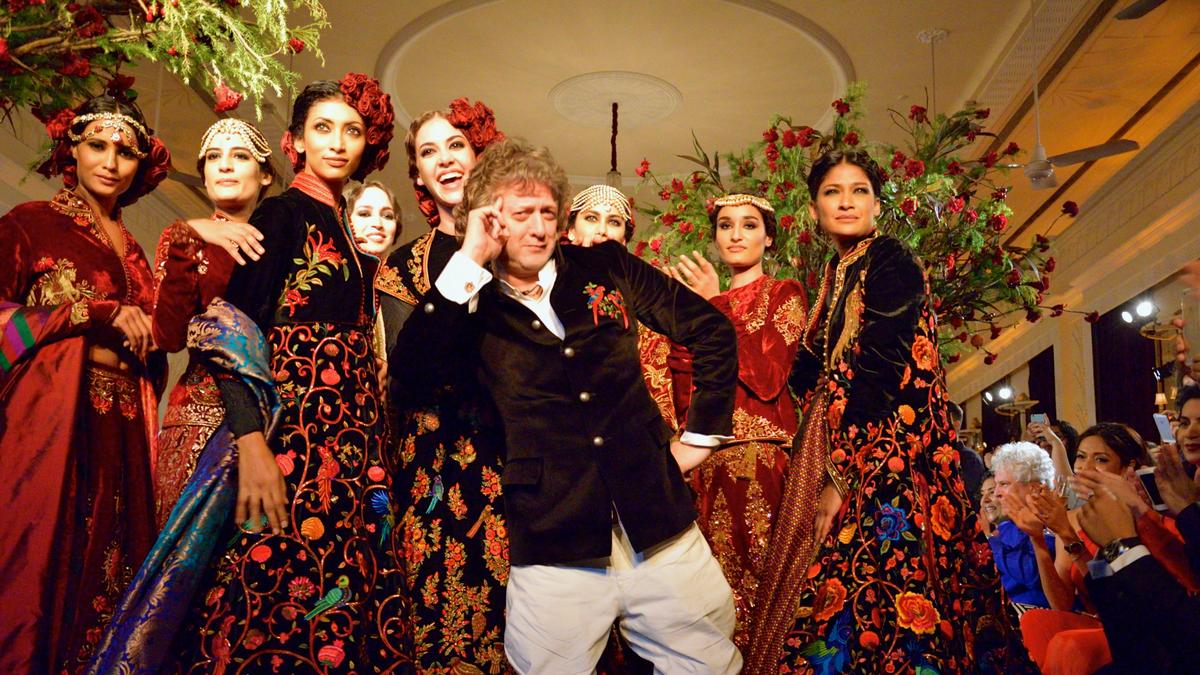The assignment you have been dreading for a year is here. Couturier Rohit Bal’s obituary. He died on Diwali, November 1, 2024, at 63. His mortal remains — buried under flowers at Delhi’s Lodhi Crematorium with the face laid bare for last respects before the pyre was lit — looked irrevocably frozen in time. Love and death pulsed in the air. The palpable love of his family and friends, provoked into exultation by the Grim Reaper’s arrival.
Deep down, you had worried for a couple of years that you may have to write this, unless you quit the fulltime job of living, before the fashion industry’s beloved Gudda, who had been ailing. Let me say this then, tremulous as I feel about its (in)correctness, that I had long wondered if Bal had a death wish. That his passion for life, for merriment, sensitive sentient connects, sometimes with caution thrown to the winds, was how he wanted it to be. It would be unfaithful to his philosophic stoicism to say he didn’t know the consequences.
Life is fatal anyway and this is not about Bal’s personal indulgences, speculations of which over the last three decades eclipsed some dimensions of his design work. Our collective engrossment with his crowd-pulling persona, glossed over the empath that he was.
This obit is about that empath — naturally outfitted for fashion’s glamour and grease, his sensitivity his curse.
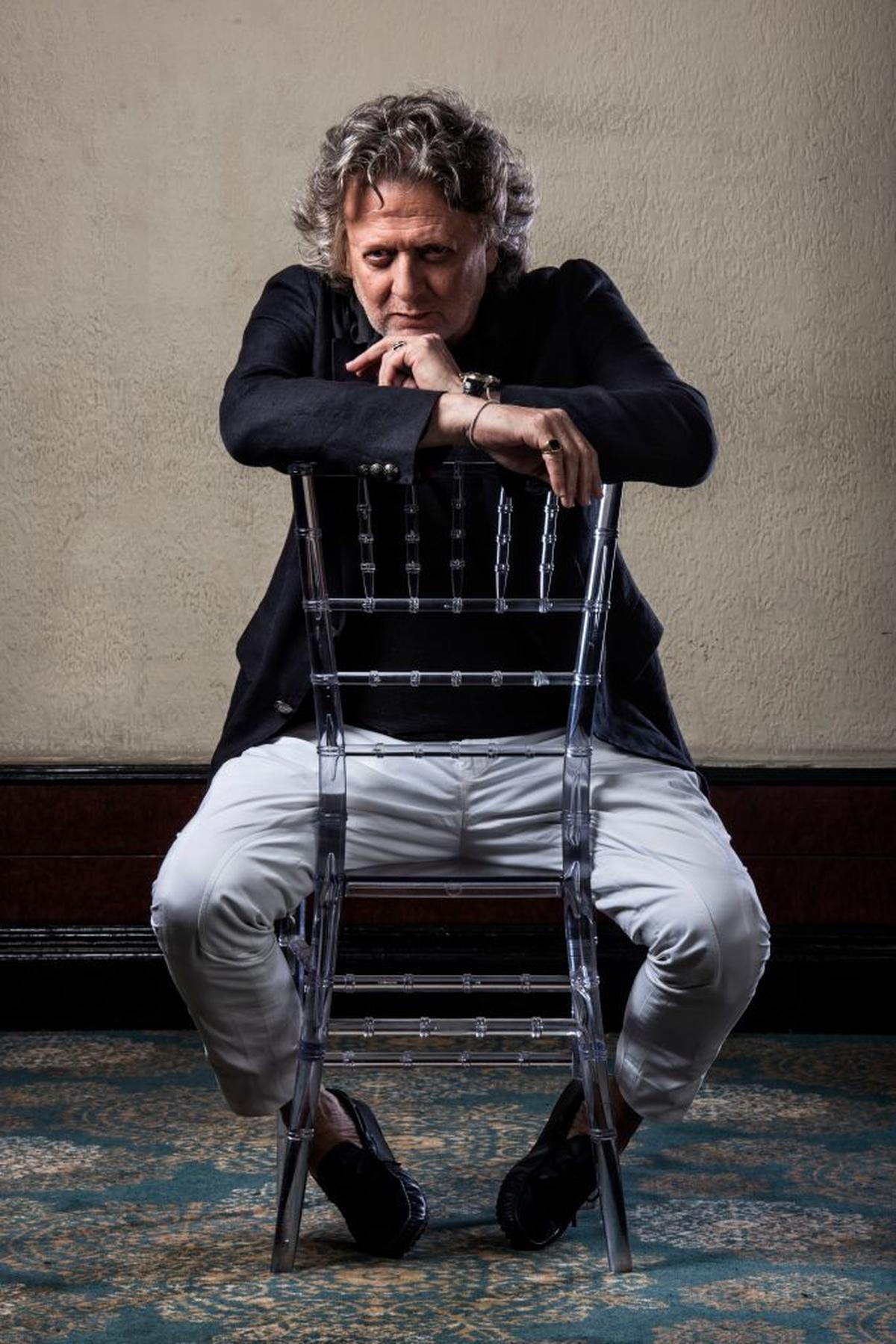
Making of the empath
I have a fuzzy memory of my first proper meeting with Rohit ‘Gudda’ Bal as I called him. ‘Rohit’ sounded tepid, with his golden hair, blue eyes and rosy skinned personality, outfitted in velvet jackets with embroidered motifs. ‘Bal’ was rather Beta and he was visibly Alpha. ‘Gudda’, his pet name, was apt. But I didn’t want to be a groupie. The three names together felt right. These impressions go back to 2007, at the first edition of Marie Claire Made in India awards when he sauntered in flanked by model friends, to receive the Designer of the Year trophy. I was then the first editor of Marie Claire India.
Decorative gold-bronze jacket, cream jodhpurs, long hair, and half a crinkling smile, served the right blend of vanity and self-awareness. He loved being the centre of attention in those days. By the time the evening wore out, Bal was dancing with his young male friends, high on adrenaline.
That intensity bled into his work, too. His artisanal aesthetic sparkled in his couture. Spectacular fashion shows would end with Bal dancing on the ramp, after flowing anarkalis fluted at the edges, sexy cholis, long slit jackets styled over crushed ombre skirts, flower-bedecked garments, quilted jackets, boleros, capes, kurtas, tunics and embellished men’s sherwanis had walked out. Jodhpurs, too. Actor Arjun Rampal, Bal’s rumoured boyfriend once upon a time, wore these with flamboyance when he would return as showstopper for his friend. Bal said he loved Rampal. “He is my brother,” he said to me simply in a recorded interview.
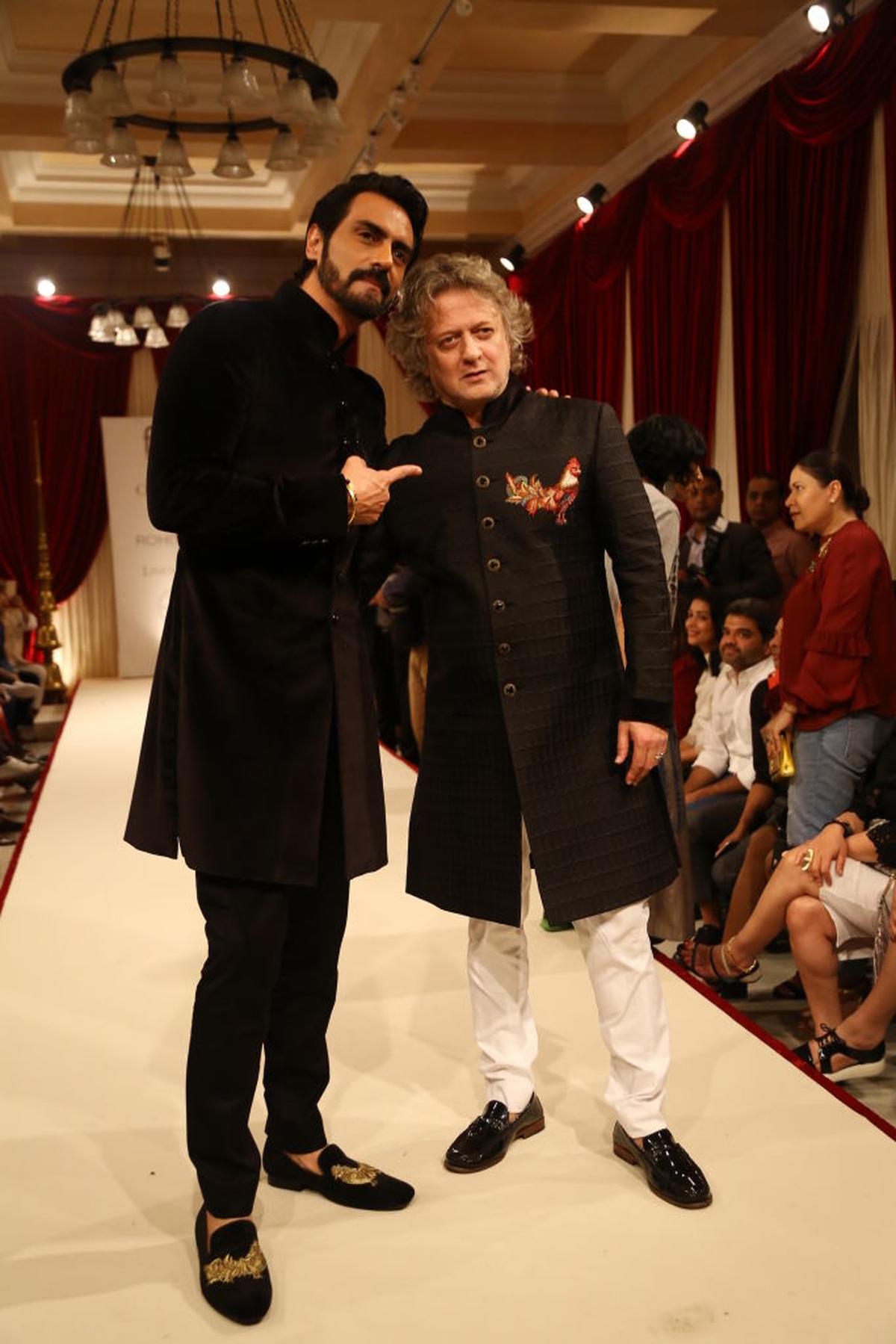
Actor Arjun Rampal and designer Rohit Bal at India Couture Week 2017 in New Delhi.
| Photo Credit:
Getty Images
Fabric of life
Mulmul, khadi, velvet would be the leading metaphors from Bal’s fabric oeuvre. “The humility of khadi touches me. Cream has an intrinsic purity, the innocence of Tabula Rasa,” he said. The lotus was his lingering muse, a flower that symbolised his inner domain. “The humility of the lotus, which blooms in swamps, and the vanity of the peacock have been the two incredibly spectacular opposite forms I have been attracted to all my life,” he would say. Imperceptibly sometimes, Bal was lotus and peacock himself. That ebullient charm was a double-edged sword — it distracted from his achievements, much as it toned down critical assessments of his designs. After all, he wasn’t just “evolving” as a designer. There was many a stumble.
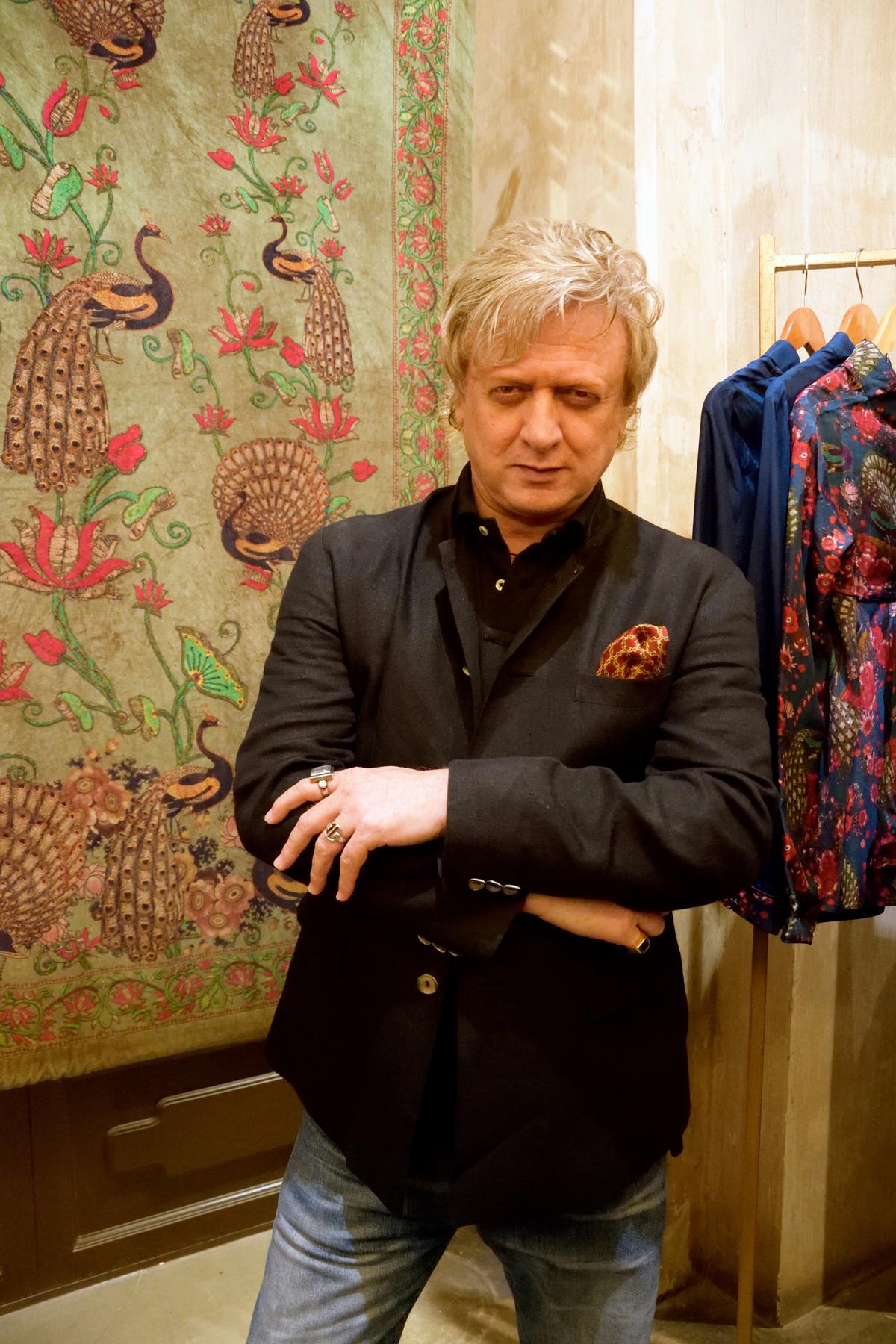
Rohit Bal at the launch of his home collectibles and apparel line in Mumbai, 2016.
| Photo Credit:
Getty Images
For a chapter titled ‘Raja and Yuvraj’ (couturier Sabyasachi Mukherjee, the latter), in my book Powder Room (2012), Bal invited me to his Noida workshop. This was in 2011. He had noticed Sabyasachi’s work and credited him with originality, a compliment Bal reluctantly endowed on most others. From the studio, we drove together in his luxury car to his home in Delhi’s Defence Colony. He sat in the front alongside the driver and I, in the enormous back seat, corseted by tension over our first “candid” interview. Defences came down gradually and the credit goes to Duffy, Bal’s pet dog, a Boxer whose full name was Duffer.
A 13-year-long exchange was seeded that evening. About design, plagiarism, mediocrity in Indian fashion, the obsessive pursuit of celebrities, the media’s sensationalist stories about Bal’s personal life, the quotes he never gave but got attributed to him. He explained why he had begun to drift away from journalists, casting his boundaries, seldom responding to calls from reporters.
These exchanges were infrequent. Some on WhatsApp, some in person. Sometimes at his stores, once at Lodhi Hotel where he shot with The Voice of Fashion crew for the Diwali 2021 edition. For the cover, he wanted to wear either Shahab Durazi or Rajesh Pratap Singh, none other.
Sunset was Bal’s preferred hour for chats like these, with lights muted. One evening, seated as he was on a blue velvet sofa in his menswear store in Delhi, warmed by mellow lighting, I found him a ponderous man with an aristocratic aura. More Dasharath than Ram. More Homer, in plundering depth, not the wandering Odysseus. An Afghani war lord even on a cushioned seat.
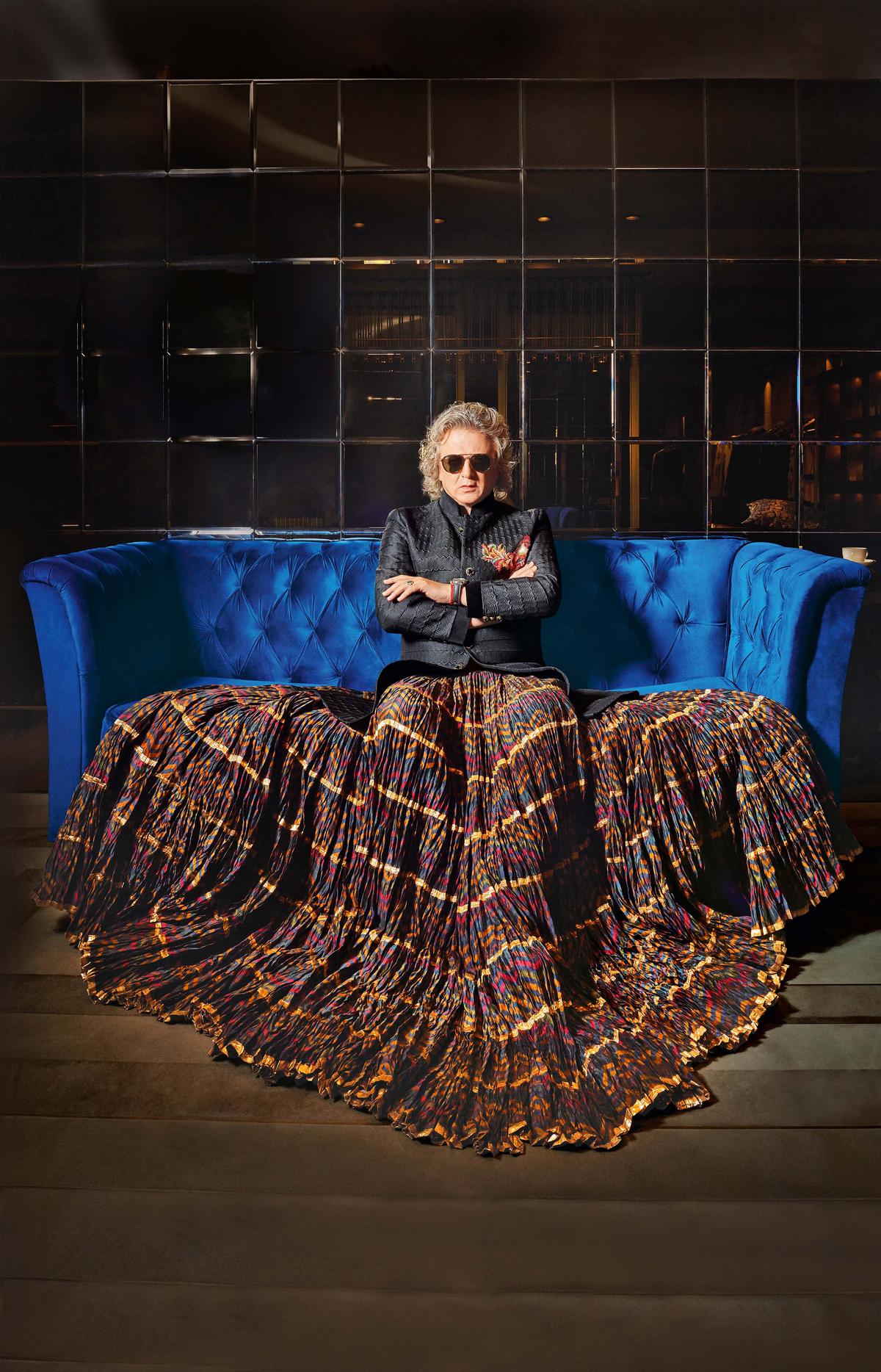
Rohit Bal in a ‘ghaghra’ for a magazine shoot in 2017.
| Photo Credit:
Getty Images
Over the years, he gave me a few exclusive interviews, once agreeing to speak about his relationships for a cover story for HT Brunch. He wasn’t looking for romantic partners who could recite the Bhagwad Gita backwards and said that love didn’t need to eat with a spoon and fork. “I’ve always wanted a balance between brawn and brain.” He wore a crinkled ghaghra for the cover — among his most memorable photos.
The exclusives I got were never breaking news about his collaborations with Jabong, Usha Silai, Linen Club, Khadi India, Biba, Bombay Dyeing, Titan Nebula, Zippo Lighters, Indian Roots, Sagrados Luxury Villas in Goa, and many others, of which some were snuffed out sooner than later. Instead, they were reflective exclusives. Presumably, as a designer, he was keen to be understood without being lined by controversies, while I wanted to get past that very looking glass. Earnest as Alice.
Rohit Bal with the luxury watches he designed for Titan in 2003.
| Photo Credit:
G.P. Sampath Kumar
Bal’s growing fatigue for fame, the essential disregard Indians had for fashion, and the pull of reclusiveness began to crop up as evolving life motifs. “My disco duck days are over,” he said.
But that would come later.
Before the lights dimmed
“I more than fit the bill of Indian fashion’s poster boy in the eighties. I had the looks, knew how to dress, spoke well, I was forward, crazy, loved, unloved, open to experience, intelligent, I had the courage to tell the world that I was gay. I filled all the gaps,” he said. He was talking about his Kashmiri roots, St. Stephens education, his intelligent and liberal mindset. This was for Powder Room. He had already had a heart attack, which had become a bigger discussion point than his stunning collection called Shahaan-e-Khas for India Couture Week, inspired from Indian garments in museums across the world. Between Siyahi (2007), Shararat (2010) and the latest Kaynaat this October, where a fragile and frail Bal took a last dancing bow at Delhi’s Imperial hotel, there was a lot going on in his design studio.
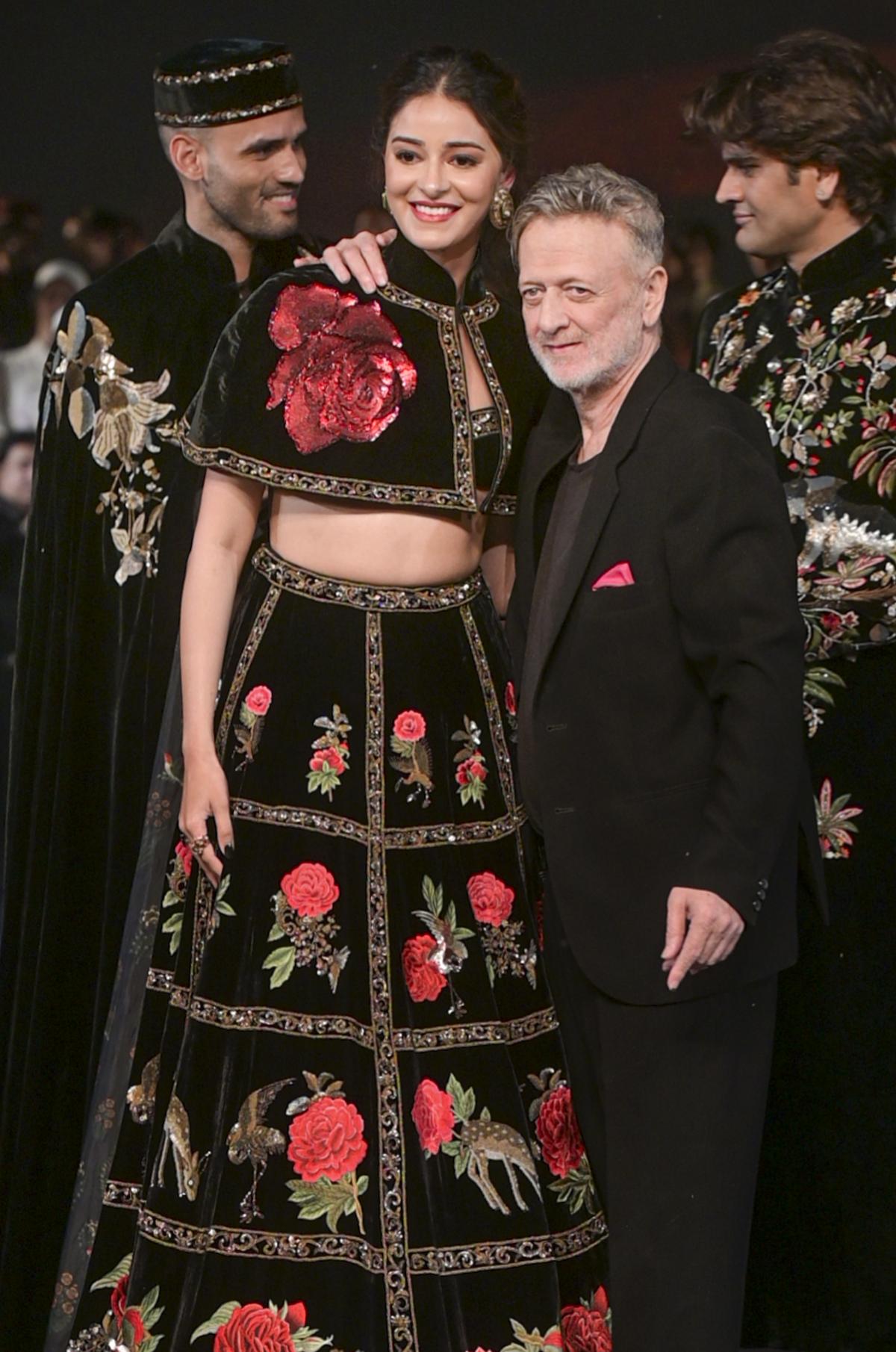
Rohit Bal with actor Ananya Pandey at Lakme Fashion Week, October 2024.
| Photo Credit:
PTI
Yet, from merrymaking to a search for reclusiveness, propelled by illness and hereditary cardiac issues, it was not a decimation of the artist. Rather, it was the fast burn of a too-bright candle. His heady ways, too fervent passions, after parties, the intensity of relationships both romantic and familial, spiritual realisations and his gentility, which is the very essence of Kashmiriyat, were taking a toll.
Fashion metabolised Bal’s life experience. But while that was all he would do, including a Bal Bache line for children in 2021, he was no longer captive to fashion. He was free, if heavy-hearted.
“I have been extremely sensitive to personal auras right from when I was a child. I am caring, emotional and gentle. Whether that gentility has something to do with a certain sexual orientation, I don’t know,” he said during the HT Brunch interview, seven years ago, confessing to his “mad, passionate, Devdas-like” self in love and loss.
Moving words spoken from a heart that was probably beating retreat.
The writer is editor-in-chief of ‘The Voice of Fashion’.
Published – November 07, 2024 01:03 pm IST
#Tribute #Indias #famous #couturier #Rohit #Bal #lived #heart #died

